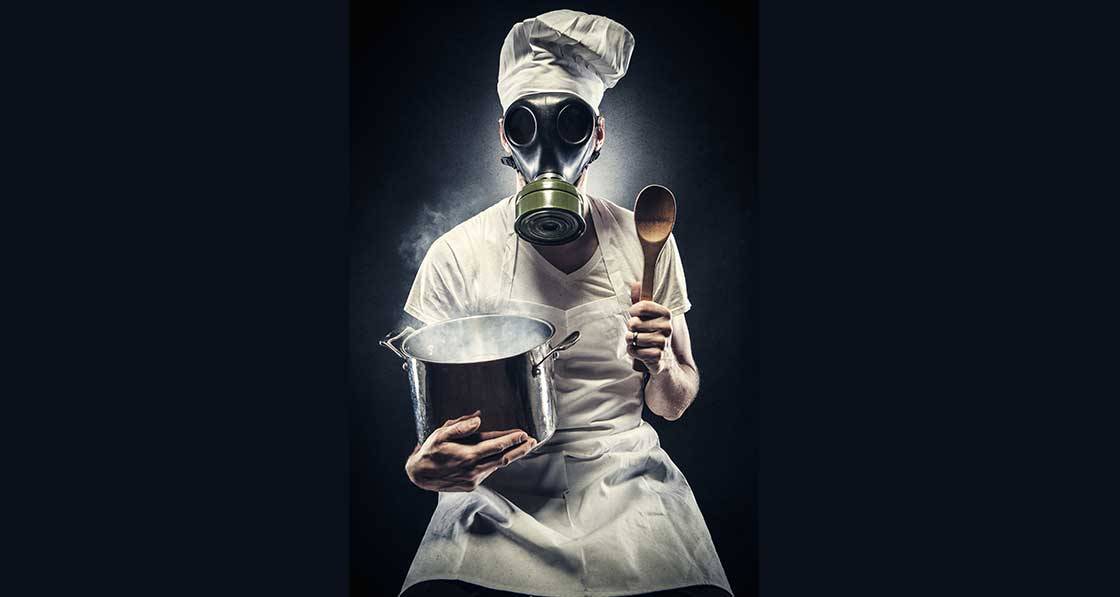
- Insight
- Posted
Hell's kitchen - Why cooking can destroy indoor air quality
When it comes to air pollution, we tend to worry most about things like traffic fumes and solid fuel burning — or when it comes to indoor air, condensation, damp and mould. But one of the biggest threats in the air we breathe comes from something we are exposed to almost every day, but rarely think about: cooking. John Hearne reports on the evidence for how cooking affects indoor air quality, and what we can do about it.
This article was originally published in issue 33 of Passive House Plus magazine. Want immediate access to all back issues and exclusive extra content? Click here to subscribe for as little as €15, or click here to receive the next issue free of charge
In 2015, the National Cancer Centre in Singapore carried out a study that didn’t receive much attention on this side of the world. Each year between 2010 and 2014, an average of 1,370 people in the city state were diagnosed with lung cancer. The curious finding was that three in ten of these had never smoked a cigarette in their lives. They weren’t just non-smokers; they had never smoked at all. Of these never smokers, 70% were women. The thing that tied them all together? They all spent a lot of time cooking – predominantly on woks.
Research into the impact of wok cooking found that it leads to significantly increased levels of the toxicants acrolein and crotonaldehyde, substances which can attack a person’s DNA. The complicating issue for many of these women was that because they were not thought to be in a risk group for lung cancer, the diagnosis came late. It’s a shocking discovery, one of several that have brought an increasing focus on the quality of the air we breathe inside our homes.
The reality is that indoor air quality, or IAQ in shorthand, has long been overlooked among the metrics we use to measure and improve human welfare. Concerns about the air we breathe have been with us since the industrial revolution, but the regulatory environment that evolved to regulate it has focused almost exclusively on the outdoors. Outdoor air, or ambient air, as it’s become known, is monitored constantly and is the subject of detailed international directives and agreements.
Cooking a Sunday roast can drive indoor pollution levels above those in the most polluted cities.
But the reality is however that for good or ill, we’re not outside as much as we used to be. A long-term UK study on children’s lives monitored trends in the use of time from 1975 to 2015. It found that these days, the average person spends two hours a day outside. That’s 22 hours breathing in the great indoors. And what we’re learning is that it’s not actually that great at all.
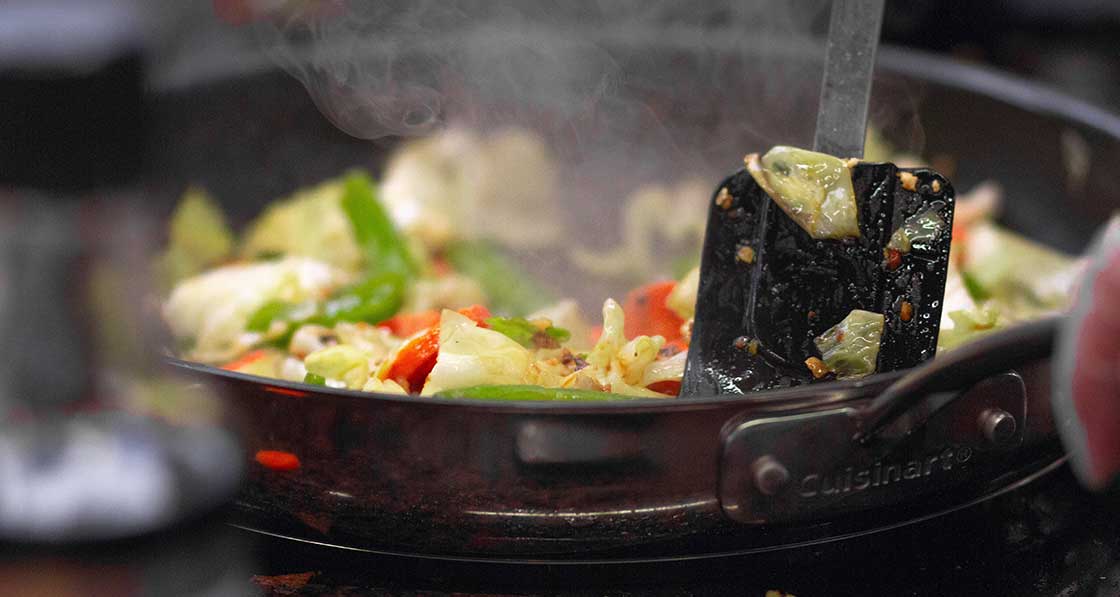
Cooking & indoor air quality
Max Sherman is a retired senior scientist at the Lawrence Berkeley National Laboratory and honorary professor at the University of Nottingham with over 30 years of experience in building physics, and a particular expertise in indoor air quality. He’s been at the forefront of the drive to make people more aware of adverse side effects of cooking. The first thing he’s keen to point out is that ventilation has been an issue for humans for quite some time.
“Cooking is one of the things that set humans apart from their ape cousins and has been around about two million years. When humans expanded out of Africa and started to live in caves, ventilating became important. Cooking has always represented the biggest IAQ hazard humans face and we have forever been coming up with mitigation strategies. Caves had carved vents in them. The first houses didn’t have doors, but they had chimneys.”
What’s emerged is that these mitigation strategies haven’t kept pace with modern life. In the aftermath of the oil crises of the 70s, homeowners – particularly in the US and across Europe – began to seal up and insulate leaky houses in an attempt to improve energy efficiency.
But without well-designed ventilation, airtight homes can trap a variety of background pollutants from interior sources such as furniture, carpets, paint, etc. and intermittent sources such as from heating, bathing and washing (moisture), and cooking. The smaller and more airtight the home, the greater the potential risk.
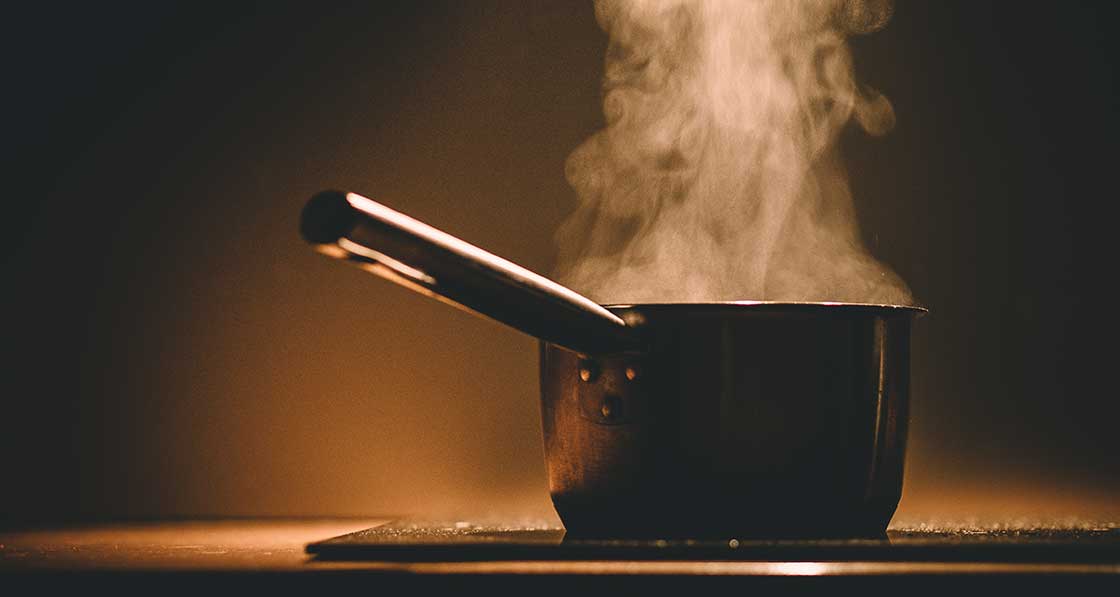
It’s important to say here that notwithstanding the impact of wok cooking as demonstrated by the Singapore study, and indeed other research, we’re not just talking about stir-fries.
Sherman says that in the US, the Environmental Protection Agency now ranks indoor air quality as one of the top five health concerns in the population. “If you smoke indoors that’s worse than cooking, but only a fraction of people smoke. If you have radon problems in your home, and some do depending on where they live, that can be worse, but from a population point of view, everybody cooks, so population-wide, cooking is the most significant indoor contaminate activity.”
So, let’s take a closer look at what happens to the air we breathe when we engage in this most basic of human activities.
Much depends on the type of cooking you’re talking about. Electric coil burners on hobs, in ovens and toasters can release fine and ultrafine particles – of which more in a minute. Gas burners can generate nitrogen dioxide, carbon monoxide, formaldehyde and particulate matter. Burning organic matter during cooking, especially high-temperature cooking like frying, broiling, and sautéing produces more particulate matter, as well as acrolein (a toxic irritant) and polycyclic aromatic hydrocarbons.
The latter, abbreviated to PAHs, have been linked to skin, lung, bladder, liver and stomach cancers. Boiling, by contrast, is relatively benign, but still releases moisture into the air, which, if left unchecked, can lead to damp and mould growth. The resultant health issues have been well documented before in this magazine.
Research from the University of Colorado published last year found that cooking a Sunday roast can drive indoor pollution levels above those found in the most polluted cities on earth. The researchers found that something as seemingly inoffensive as making toast drove particle levels way higher than expected.
As English ventilation expert Ian Mawditt explains, particulate matter is important as it enters the airways and, subject to size, the lungs. “Thus, irrespective of source, this pollutant is a concern,” he says. This may seem counterintuitive given the need for food for nutrition. “Food is good for you, life-giving, etc. yes, but only when it enters the digestive system and not the respiratory system” says Mawditt.
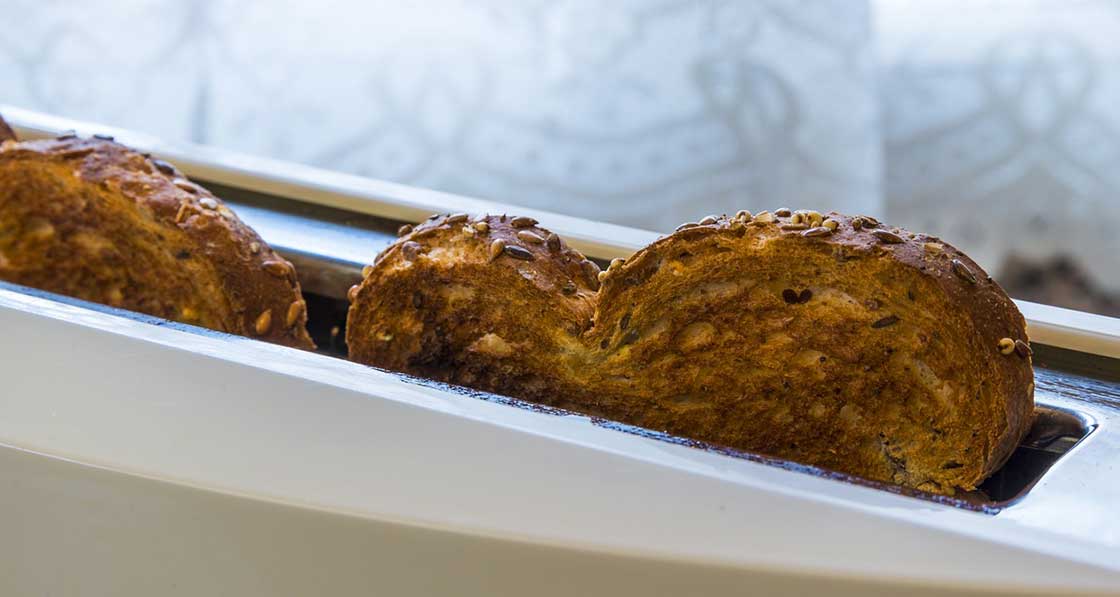
Particulate matter
It’s an issue of which Ben Jones in the Department of Architecture and Built Environment in the University of Nottingham is well aware. Much of his research focuses on what are known as PM2.5, which are particles that are smaller than 2.5 micrometres across. Small enough that they can be inhaled deep into the lungs, pass into the bloodstream and build up in internal organs. Research on the impact of these particles has found causal links to respiratory disorders, skin conditions and even depression.
This may actually only be the tip of the iceberg, however. Jones points out that while we have ample research on the impact of PM2.5 outdoors, there is in fact very little on the health impacts of these particles when they are generated inside the house.
“The PMs we get inside are not like the PMs we get outside. They come from different sources. The only physical property they share is their diameter. From outside, they will come from the combustion engine, petroleum products or oil-based products.
Inside they’ll come from the heating up of fat and the burning of food. What we do know is that the PMs are coated in polycyclic aromatic hydrocarbons which are carcinogenic.”
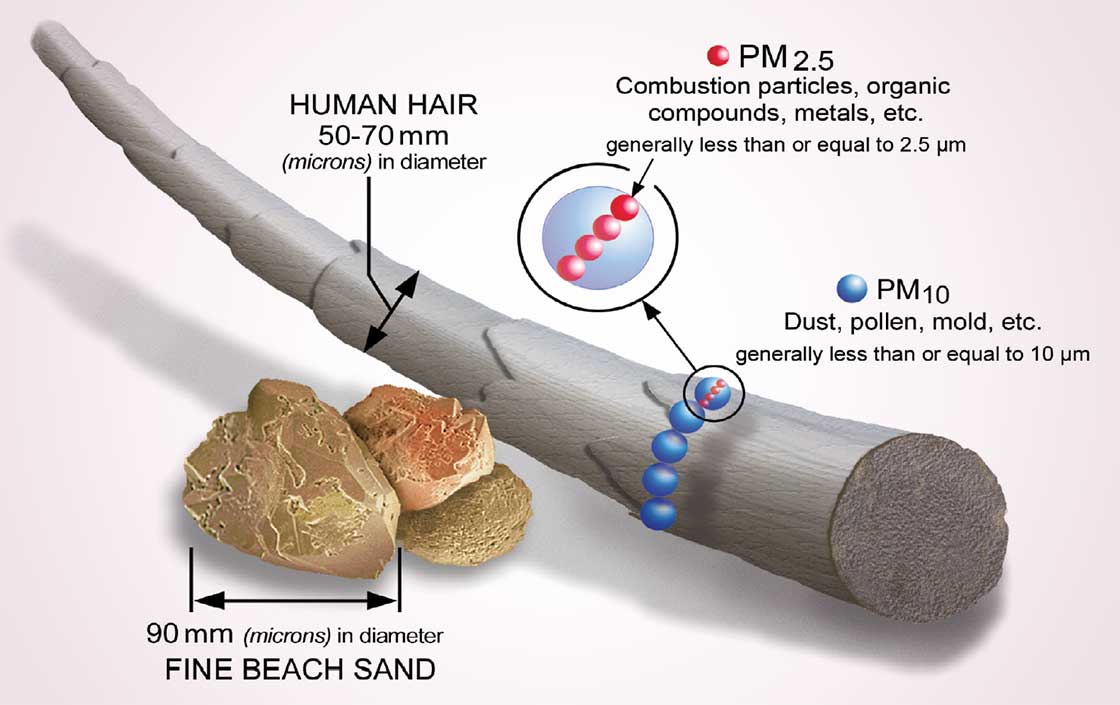
He adds that while we don’t have empirical evidence to confirm this due to the relatively recent introduction of this cooking technology into the domestic kitchen, modern induction hobs are probably the safest way to cook. Max Sherman zeros in on baking and frying.
“So, you’re frying something in a pan and you’ve got hot oil bubbling away. It’s making all sorts of particles that are chemically reactive. These are called reactive organic compounds and are even more dangerous than the particles that are floating around on the outdoor air, because the latter have been there for a long time and so their reactive components have all gone away. Particles that are freshly produced by combustion or cooking activities are probably worse for you than the ones that are out there.”
We won’t know definitively without further research, but it’s likely that the health impacts of ingesting PM2.5 inside the house are significantly more serious than ingesting them outside.
“Not all 2.5PM are created equal,” says Catherine O’Leary, a post-doctoral research student who has worked with Ben Jones on these issues. “We use the same assessment of risk for both indoor and outdoor PMs and that’s a problem. That’s a major flaw in our analysis.”
Emission rates of PM2.5 vary significantly depending on what’s in the pan and how it’s being cooked. To try and get more reliable data on the issue, Jones and O’Leary carried out a study with The National Scientific Authority of the Netherlands in which the team cooked four standard meals, each of which was reasonably typical of Northern European cuisine.
“We were able to quantify the rate at which particles are emitted,” says Jones, “and we were able to show that if you cooked the same meal again and again, the profile of the emission has a certain pattern to it.” For example, Maillard browning, which is the scientific name for the process of browning and searing meat, generates high levels of emissions, but add water or tomatoes and the emission rate decreases rapidly.
The solution?
Cooking has always represented the biggest indoor air quality hazard.
Which brings us back again to mitigation strategies. The bad news is that existing ventilation systems in most UK and Irish homes are not sufficient to exhaust PM2.5 emissions effectively. Research by Ben Jones’ team in the University of Nottingham found that 98% of English houses are too airtight to dilute PM2.5 emissions solely by infiltration. This method alone will not bring daily mean concentrations in kitchens below the WHO guideline 24 hour average of 25 μg/m3, that is 25 micrograms per cubic metre. Controlled ventilation is therefore a vital component of any mitigation strategy.
The statistical model used by the research team predicts that when applied during cooking, ventilation strategies prescribed by English building regs are adequate for less than 12% of English housing. Then there’s ASHRAE 62.2, which sets out internationally recognised standards for ventilation system design and acceptable indoor air quality. The model predicts that if this standard is deployed, it will be adequate for 75% of housing.
The solution? A range hood – and building regulations across Ireland and the UK regions have all been recently updated to reflect this fact implicitly or explicitly, with extract ventilation requirements doubling if the extraction is not above the hob. There is now ample research evidence that identifies the cooker hood as the most effective way to exhaust PM2.5 – and indeed all other cooking emissions – from the kitchen. Jones and his team of researchers in Nottingham have concentrated their efforts on PM2.5 because, as he points out, ‘if you capture the PMs, you’ll also get all the volatile organic compounds from the cooking as well.’
But as with PM2.5, not all hoods are created equal. Jones describes hoods which merely recirculate filtered air as ‘probably a waste of time’. And of those that do exhaust to the outside air, the capacity of these systems varies considerably from hood to hood.
In the UK and Ireland, building regulations prescribe intermittent kitchen ventilation rates of 30 l/s adjacent to a hob – where there’s a canopy covering the hob – or 60 l/s elsewhere. In new dwellings these are obligatory, while in refurbs, it’s only necessary to maintain existing ventilation systems. The other point to make here is that these rates were chosen to remove nitrogen dioxide and moisture only. Ben Jones asserts that while a flow rate of 60 l/s trumps 30 l/s, “in reality, both are inadequate.” ASHRAE 62.2 meanwhile recommends minimum range hood extract airflow rates of 50 l/s – or as high as 150 l/s for other kitchen exhaust ventilation, including downdraft units (an extractor which rises out of the worktop when needed).
“The problem now,” says Max Sherman. “is the various rating systems that are out there will tell you what the power is or what the flow rate is but not how good it is at capturing the particulates, which is what you really care about. In the last couple of years several groups have been working on standards to measure the capture efficiency of these devices so you can figure out the best way to capture the most particles.”
A dialogue has begun between the largest manufacturer of range hoods and Sherman’s Lawrence Berkeley National Laboratory. He’s optimistic that the next iteration of ASHRAE 62.2 will include a capture efficiency requirement.
Things are moving more slowly on this side of the Atlantic. Initial attempts by the University of Nottingham to engage cooker hood manufacturers haven’t come to anything.
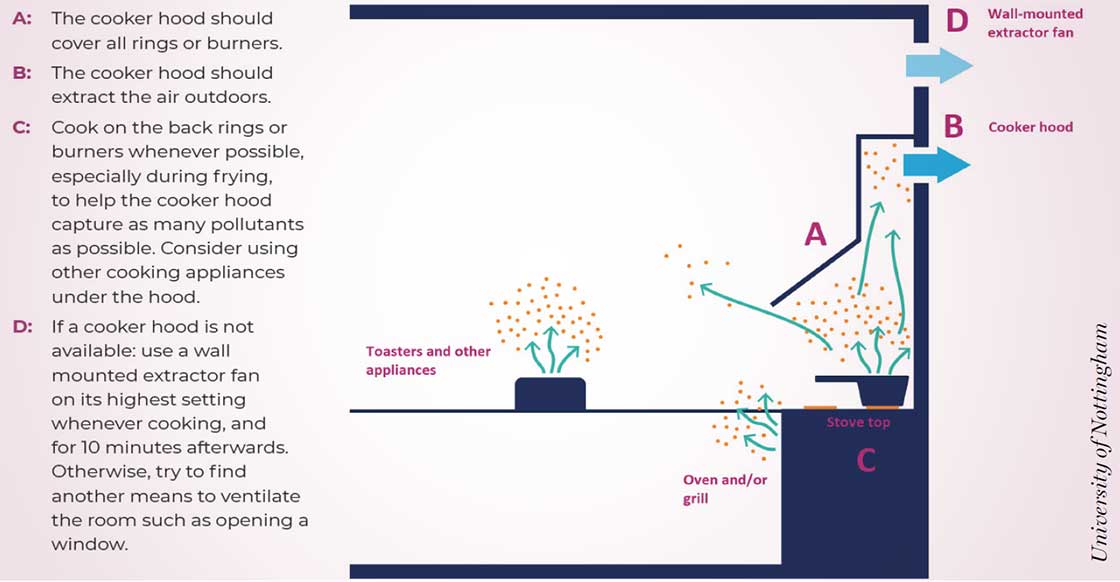
Passive House Plus understands the research has been submitted both to Public Health England and to the UK Ministry of Housing, Communities and Local Government, and we hope dialogue between these bodies will lead to changes in the regulatory guidance in this area. In particular, safe exposure limits associated with indoor generated particulates should be included in the list of pollutants used to set the ventilation performance standards. The other point to make here is that you might have the best cooker hood in the world, but it won’t make any difference to the air quality in the home if it’s not switched on – let alone being left on for ten minutes after cooking, as per the guidance. Surveys have found that people frequently don’t turn on the hood because it’s noisy – a risk which increases if the regs require higher extract rates – or simply because they forget to. People sometimes only turn them on to remove smoke and odours. Many of the worst pollutants cannot be sensed, which implies that we may not be using the cooker hood when we need it most.
“Whenever we give a talk,” says Ben Jones, “we ask who’s got one and who uses it. You’ll notice a drop off. And I’m as guilty as anybody. I listen to the football phone-in on a Saturday night when I’m cooking. If I’ve got a fan on that sounds like a jet plane taking off, I can’t hear the radio.”
This is an area that we’re going to hear a lot more about in the coming weeks. As I write this, the Royal College of Paediatrics and Child Health, in association with the Royal College of Physicians, has just released a major report on the health effects of indoor air quality on children and young people. It’s a multi-disciplinary report that has drawn on research by Ben Jones and his team in Nottingham – and indeed on Max Sherman’s earlier work – to draw attention to an issue that has been overlooked for long enough.
For more information including research papers and webinars on this topic visit the website of the Air Infiltration and Ventilation Centre, www.aivc.org.




